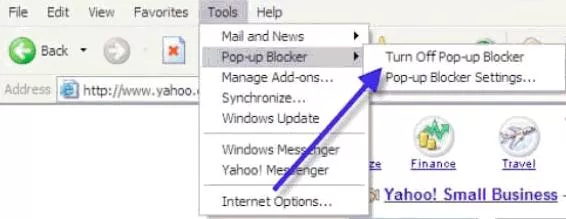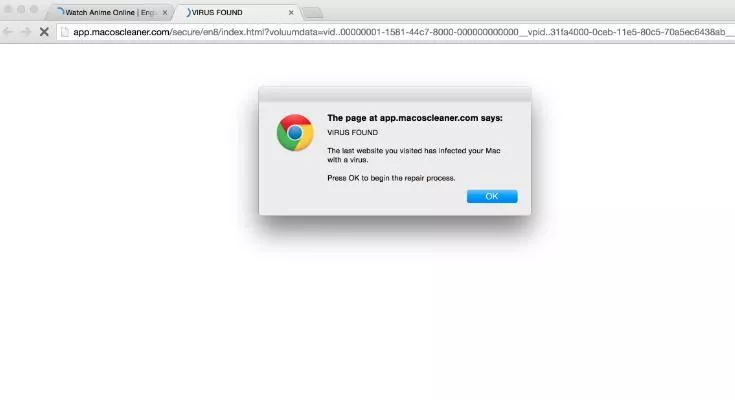Why Am I Still Getting Pop Ups on Chrome
The popup Windows are made to open a new page within another window, maintaining the original page's functions. Sometimes, you may also encounter the popup Windows when using Google Chrome.
This happens because of two reasons: first, the pop-up blocker may not be set up correctly and the second reason is another program is hovering around the pop-up blocker. There are two popup blocker options in your Chrome.
The first one is to "enable all sides to show pop-ups," and the second one is "Do not allow any sites to display pop-ups." You have to choose the second one to disable pop-ups.
Pop-Up Blocker Disabled

Since the pop-up blocker program hasn't been set up properly, you might be seeing pop-ups in Chrome. Only two pop-up blocking options are available in Chrome: "Enable all sites to show pop-ups" or "Do not allow any sites to display pop-ups." To prevent pop-ups, the latter selection must be made. Chrome doesn't try to determine which pop-ups are acceptable and which ones aren't, instead taking an all-or-nothing stance.
By tapping the three-line "Menu" symbol, choose "Settings," "Show advanced settings," selecting "Content settings" now under Privacy section, selecting the radio button adjacent to the "Do not allow" selection, then pressing "Done," the pop-up blocker can be used to stop pop-ups on Chrome.
You've Made an Exception
Any pop-up generated from a specific page that has been added to Chrome's exceptions list may bypass the pop-up blocker. Chrome utilizes a regular expression pattern to permit pop-ups for connected sites in the same tree, that might mistakenly permit pop-ups on some other pages with similar names of the same website.
To use particular features or access services on some websites, you might need to make an exception. For login purposes, a website might employ a pop-up window. Additional pop-ups, such as adverts, will also be permitted to appear if Getting Pop-Ups on Chrome on that page is permitted to use the login service.
Malware and Chrome Pop-ups

Although if pop-ups are blocked and also the site does not appear on the exceptions list, malware can open pop-up windows and get through Chrome's pop-up blocker.
Whenever pop-ups appear on websites when the pop-up blocker must be blocking them, the machine is malware infected.
If the harmful malware is deleted from the system, the pop-ups will stop. The bulk of malware infections may be easily removed with free anti-malware tools including Malwarebytes and Spybot. Malware infections can be found and removed by antivirus software.
Adware Circumvents Blockers
Adware can open pop-up windows despite pop-up blockers, much like malware can. In contrast to malware, adware installed itself with the user's consent, despite the fact that the user may not fully understand what they're allowing.
Programs that are antivirus, as well as anti-malware, could be able to get rid of adware. The built-in uninstaller software for adware can be accessible from the Start Screen or even the "Programs and Features" menu in the Control Panel, and it might behave like any other legitimate program on the computer.
- Published by: Mick
- Category: Browser
- Last Update: 6 days ago
Featured Blog
How to Fix Error Code csc_7200026 on AliExpress
Dec 8, 2025How to Cancel Your Club Pogo Account
Dec 8, 2025DuckDuckGo Not Working? Why & How to Fix it
Dec 8, 2025How to Register a Supercell ID Account?
Dec 8, 2025Spot Geek Squad Scams: Safety Tips 2025
Dec 8, 2025Top Questions
How to Find Windows 10 Product Key 2025?
Dec 8, 2025How to Increase Wifi Speed in laptop Windows 10?
Dec 8, 2025How to Convert FireWire Connections to USB?
Dec 8, 2025How do I Unlock my Keyboard on Windows 10?
Dec 8, 2025How to Create a Roku Channel in 3 Steps?
Dec 8, 2025How to Fix Gmail App Keeps Crashing Problem?
Dec 8, 2025Categories
- OTT
- 616 ~ Articles
- Windows
- 491 ~ Articles
- 164 ~ Articles
- Browser
- 145 ~ Articles
- Laptop
- 72 ~ Articles
- Antivirus
- 40 ~ Articles
Top Searches in Browser
DuckDuckGo Not Working? Why & How to Fix it
Dec 8, 2025What is Wave Browser? 10 Ways to Remove it (Windows, Mac)
Dec 8, 2025Bypass Failed Virus Detected Download Error in Chrome
Dec 8, 2025How to Fix Browser Does not Support HTML5 Video
Dec 8, 20257 Safari ad Blockers to Try Right Away
Dec 8, 2025Chrome Keeps Flickering in Windows 11: Fix It
Dec 8, 2025Failed Virus Detected Download Error in Chrome
Dec 8, 2025How to Enable a QuickTime Plugin in Firefox
Dec 8, 2025How to Fix It When Microsoft Edge Is Not Working
Dec 8, 2025How to Easily Disable Download Panel Automatic Opening in Firefox
Dec 8, 2025